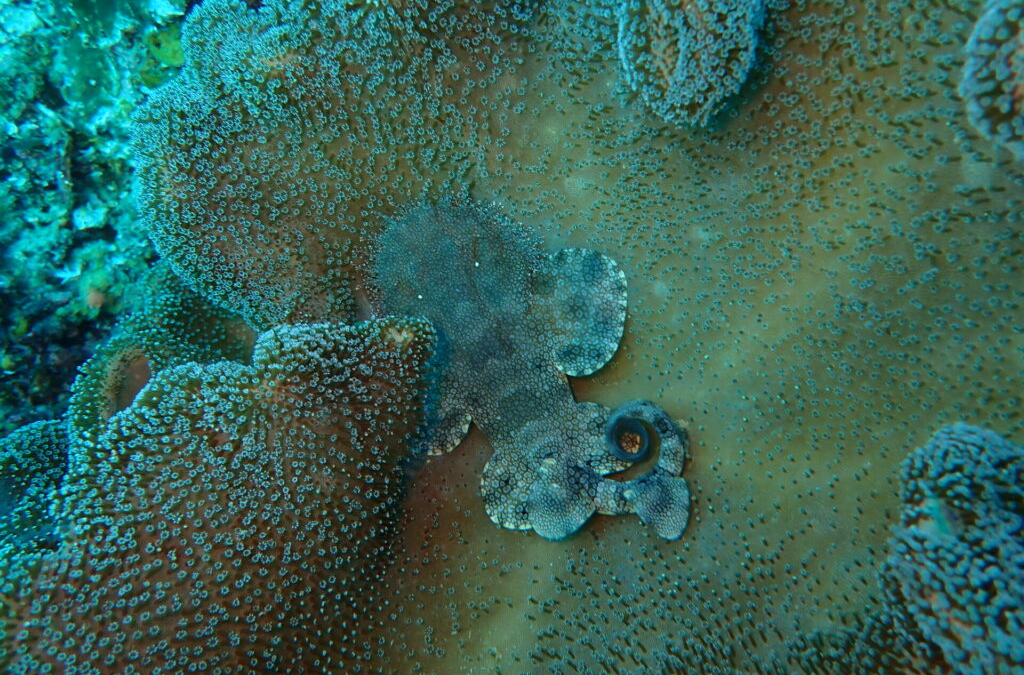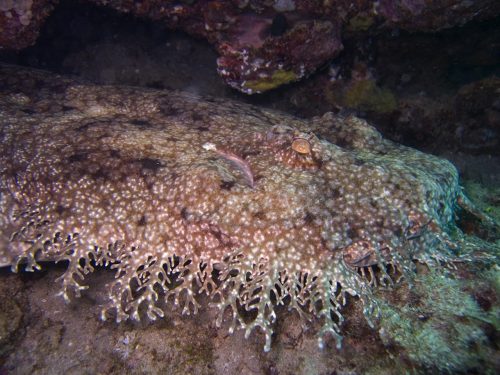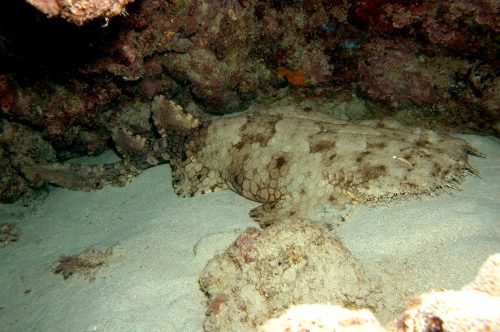Wobbegong Shark

Baby wobbegong shark spotted at Raja Ampat dive site (Photo Credit : Divernet)
There are around 500 identified shark species in the ocean, one of which is the wobbegong shark. This shark primarily lives on rocky seabeds. Its body length can reach up to 1.2 meters and is adorned with spots, making it difficult to spot among coral reefs.
The tasseled wobbegong shark (Eucrossorhinus dasypogon) lives in shallow waters, between 5 to 50 meters deep. This suggests that the bearded shark has a small range and does not roam far from coral reefs. This shark inhabits the Indo-Pacific region, ranging from Northern Australia, Papua New Guinea, to Eastern Indonesia, and is part of the biodiversity of the Raja Ampat Archipelago waters.

Tasselled wobbegong shark (Eucrossorhinus dasypogon) (Photo Credit : Jon hanson)
As an ambush predator, the wobbegong, with its flat body and striped color, has many lobes and fringes on its skin that resemble tassels. This unique morphology provides excellent camouflage, allowing the shark to blend seamlessly with its environment, making it a dangerous predator. When hunting, it wags its tail, which resembles a small fish, then pounces on its prey with a single snap of its large mouth. This method is effective for catching lobsters, fish, and octopuses. A tasseled wobbegong can even eat other sharks almost its size.
Like some other shark species, this fish can dislocate its jaws to consume larger prey. As observed off the coast of the Great Barrier Reef in Australia, marine biologists have seen a tasseled wobbegong eating a brown-banded bamboo shark (Chiloscyllium punctatum) that was 80% larger than its body. This fish is not very threatening to humans, though there have been reports of it attacking divers who got too close, but these attacks are not fatal.

Tasselled wobbegong shark (Eucrossorhinus dasypogon) at the Great Barrier Reef (Photo Credit : Leonard Low)
During the day, the wobbegong rests under the edges of coral reefs or in caves. They use small sensory organs like whiskers called barbels, located at their nostrils, to sense their environment and ambush prey that comes too close. However, at night, wobbegong sharks are very aggressive. They perch on top of coral and attack prey that passes over them. When they see a target, they will immediately lunge upwards and suck the prey into their giant mouths, before gripping it with their strong jaws and sharp needle-like teeth.
They reproduce ovoviviparously, where the egg embryos develop inside the mother's body, and when the embryos are fully developed, they hatch inside the mother's body and are then born.
The International Union for Conservation of Nature (IUCN) lists the tasseled wobbegong as a species of least concern. This fish is sometimes caught as bycatch and not as a target species. However, despite not being a concern, damage and loss of their habitat pose the greatest threat to marine life.
-YN

